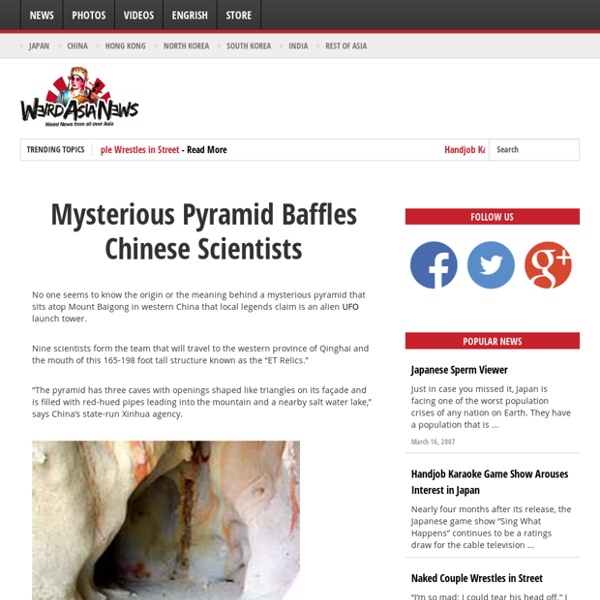AncientCanalBuilders.com
Lost ancient civilisation's ruins lie beneath Gulf, says boffin
High performance access to file storage Refugees from a lost civilisation whose ruins and relics lie submerged on the seabed deep beneath the Persian Gulf may have founded ancient, advanced Middle Eastern societies thousands of years ago in the time before the Pharaohs. According to Jeffrey Rose, a Birmingham uni archaeologist, recent excavations and discoveries indicate that a large number of substantial and relatively sophisticated settlements sprang up around the shores of the Persian Gulf quite suddenly perhaps 7,500 years ago. “Where before there had been but a handful of scattered hunting camps, suddenly, over 60 new archaeological sites appear virtually overnight,” says Rose. “These settlements boast well-built, permanent stone houses, long-distance trade networks, elaborately decorated pottery, domesticated animals, and even evidence for one of the oldest boats in the world.”
World-wide Ancient Site Database, Photos and Prehistoric Archaeology News with geolocation
Archaeologists discover earliest evidence of seafaring in Crete
ATHENS, Jan. 5 (Xinhua)-- Greek and foreign archaeologists have traced the earliest evidence of seafaring in tools dating back to 130,000 years ago during excavations on Crete island, the Greek Culture Ministry said in a statement Wednesday. In over a century of systematic archaeological research on the southern Greek island, scientists had not found evidence that Crete was inhabited before the Neolithic period (7,000-3,000 B.C.). Recent findings of an excavation at Plakias- Preveli near the city of Rethymnon, which started in 2008 by a research team led by Thomas Strasser of the American School of Classical Studies in Athens and Eleni Panagopoulou of the Greek Ministry of Culture and Tourism, show that Crete was inhabited as early as the Palaeolithic period. Noting that even 130,000 years ago Crete was an island, archaeologists present the tools found as evidence that the ancestors of modern man sailed earlier than we thought so far.
mpany digging mine in Afghanistan unearths 2,600-year-old Buddhist monastery
By Daily Mail Reporter Updated: 10:47 GMT, 15 November 2010 A Chinese company digging an unexploited copper mine in Afghanistan has unearthed ancient statues of Buddha in a sprawling 2,600-year-old Buddhist monastery. Archaeologists are rushing to salvage what they can from a major 7th century B.C. religious site along the famed Silk Road connecting Asia and the Middle East. The ruins, including the monastery and domed shrines known as 'stupas,' will likely be largely destroyed once work at the mine begins. The ruins were discovered as labourers excavated the site on behalf of the Chinese government-backed China Metallurgical Group Corp, which wants to develop the world's second largest copper mine, lying beneath the ruins. Historic find: Mes Aynak's religious sites and copper deposits have been bound together for centuries - 'mes' means 'copper' in the local Dari language No one wants to be blamed for similarly razing history at Mes Aynak, in the eastern province of Logar.
Amazing Metropolis Discovered in Africa is 200,000 years old!
By Dan Eden for viewzone. They have always been there. People noticed them before. But no one could remember who made them -- or why? Something amazing has been discovered in an area of South Africa, about 150 miles inland, west of the port of Maputo. The image [top of page] is a close-up view of just a few hundred meters of the landscape taken from google-earth. This changed when researcher and author, Michael Tellinger, teamed up with Johan Heine, a local fireman and pilot who had been looking at these ruins from his years flying over the region. "When Johan first introduced me to the ancient stone ruins of southern Africa, I had no idea of the incredible discoveries we would make in the year or two that followed. Where it was found The area is significant for one striking thing -- gold. Did gold play some role in the dense population that once lived here? The individual ruins [see below] mostly consist of stone circles. How the Site was dated NEXT: The Dating of the Site



